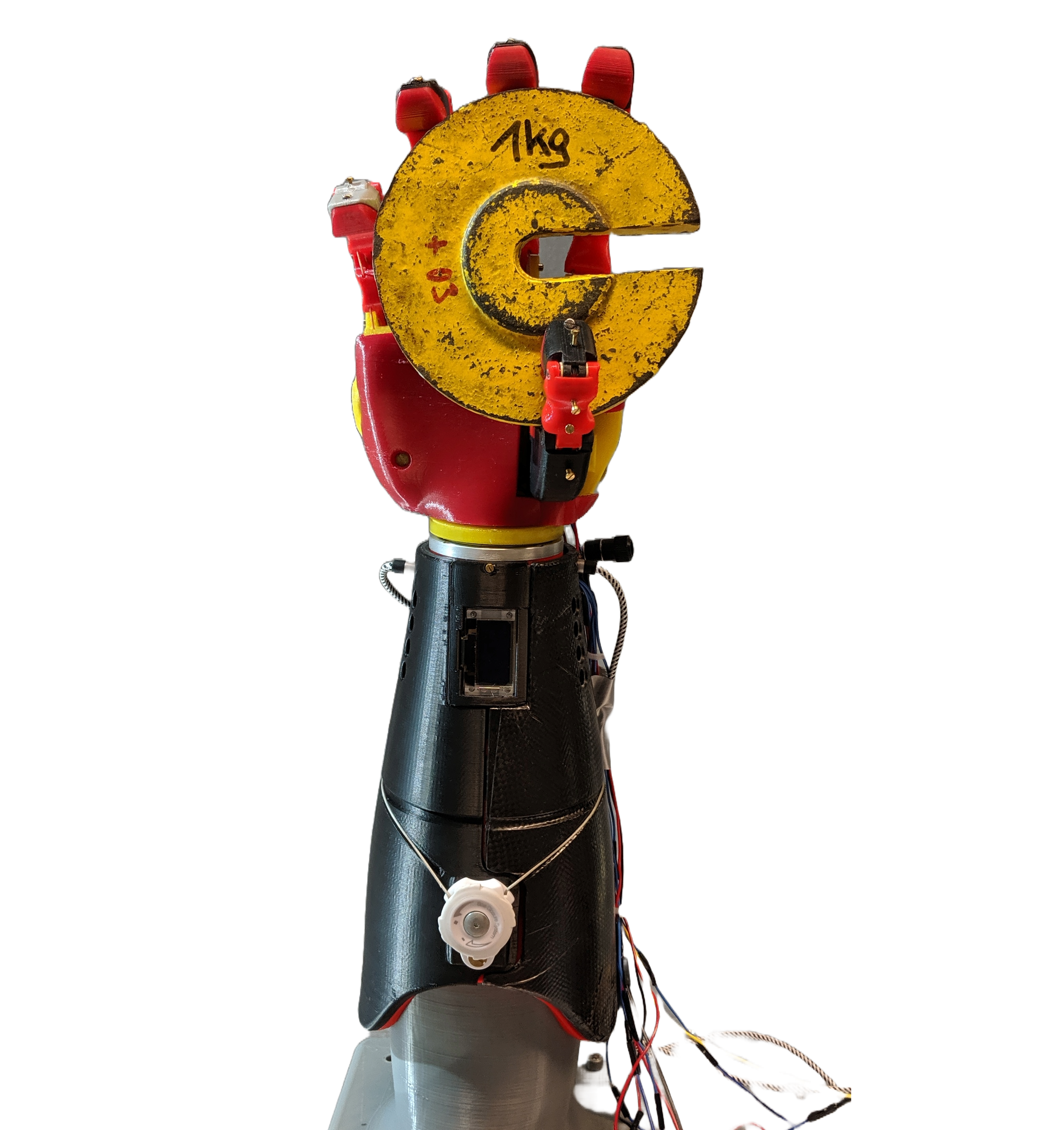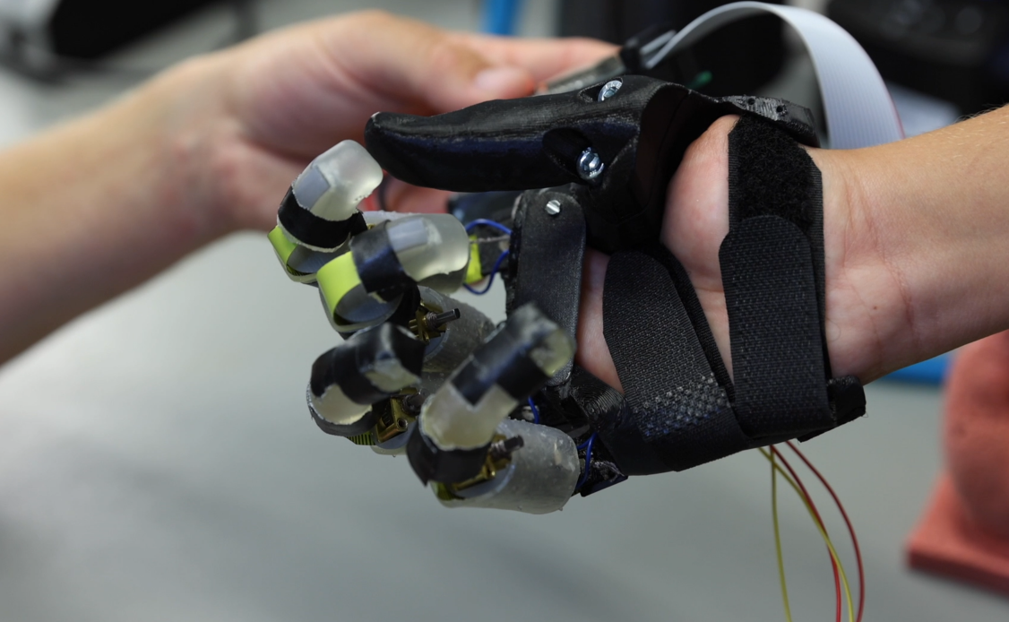Prostheses
2019-2022, Germany
Soft Skills:
Leadership, Problem-Solving, Effective Communication, Empathetic Design
Tools:
Microsoft Teams, Microsoft Office, Design-Thinking
Technical Skills:
CAD Modeling, Prototyping, Systems Design, Robotics Engineering, R&D, Requirements Gathering
Tools:
Fusion 360, ROS (Robot Operating System), ANSYS
Transradial Hand Prosthesis - 2019
Publication:
Anand Vazhapilli Sureshbabu, David Rass, and Markus Zimmermann. "A lightweight transradial hand prosthesis with a variable position thumb and thermoregulation." In 2019 19th International Conference on Advanced Robotics (ICAR), pp. 61-68. IEEE, 2019.
Description
This actively cooled prosthesis was a novel approach to address the high abandonment rates of active prostheses by introducing a low-cost, 3D-printed prosthetic hand that does not compromise functionality. The design focuses on creating a lightweight prosthesis that incorporates active cooling for the residual limb, enhancing user comfort and reducing the likelihood of device rejection. The prosthesis features a 14-degree-of-freedom (DOF) hand with a single degree of actuation, highlighted by a unique rotary thumb design. This thumb allows for variable positioning, which is critical for achieving a more natural range of grasps. The hand is complemented by a rotary wrist, creating a more integrated and functional limb system. The entire assembly is mounted on a cooled interface that houses both the control electronics and the surface EMG (s-EMG) sensors, which are essential for interpreting the user's muscle signals into precise hand and wrist movements.
Results
The key results from the research demonstrate that the prosthetic hand can successfully perform a variety of everyday tasks, leveraging different types of grasps. The underactuated design of the hand allows it to conform to the shapes of various objects, enhancing its utility and grip efficiency. The innovative discretization of thumb positions, as opposed to a fixed position thumb, plays a significant role in the prosthesis's ability to grasp objects effectively. This feature, combined with the prosthesis's lightweight design and active cooling system, positions it as a promising solution to reduce device abandonment and improve the quality of life for individuals with transradial amputations. The study's findings suggest that the integration of these features can lead to a more accepted and widely used prosthetic device, offering a cost-effective and user-friendly alternative to current commercial options.
Partial Hand Prosthesis - 2022
Description
In this endeavor, I engineered a partial hand prosthesis along with my student, this prosthesis was tailored for a friend afflicted with symbrachydactyly, a condition characterized by limb anomalies. This project was deeply personal, driven by the desire to enhance her daily life through a bespoke, low-cost solution. The prosthesis was meticulously crafted following close observation of her interactions with various objects, ensuring that the design was informed by her unique needs and challenges.
The design process was iterative and empathetic, prioritizing ease of use and comfort. By focusing on a single actuator mechanism, I was able to minimize the prosthesis's weight and complexity while maximizing its functionality. The use of lightweight materials and additive manufacturing techniques further reduced costs without compromising the prosthesis's durability or effectiveness.
Results
The prosthesis proved to be a transformative aid for my friend, allowing her to perform daily tasks with greater ease and confidence. The single actuator facilitated a range of motions tailored to her specific needs, compensating for the limited dexterity caused by symbrachydactyly. The lightweight nature of the prosthesis ensured that it could be worn comfortably for extended periods, fostering a natural and intuitive user experience.
The success of this project lies not just in the physical prosthesis but in the approach taken to understand and address the unique requirements of an individual with a limb difference. The prosthesis stands as a testament to the potential of personalized, low-cost assistive devices developed through careful observation and innovative design, offering a new lease on independence for those with similar conditions.


